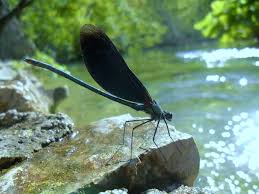I have always wondered how nature can be so perfect in its beauty. Its really a visual treat to our eyes. For sure each and everyone here will be a nature lover. There are many places that is defined for its natural beauty. Among them Plitvice National Park which is located in the Southeast Europe is famous for its fantabulous scenery. Plitvice is one of the oldest and largest national park in Croatia. The national park was founded in 1949. The protected area extends over 296.85 square kilometers. This is a UNESCO world heritage.

The national park is famous for its lakes arranged in cascades. The lakes are all interconnected and follow the water flow. They are separated by natural dams of travertine, which is deposited by the action of moss , algae and bacteria. The particularly sensitive travertine barriers are the result of an interplay between water, air and plants. The encrusted plants and bacteria accumulate on top of each other, forming travertine barriers which grow at the rate of about 1 cm (0.4 in) per year. It has a chain of 16 terraced lakes joined by waterfalls that extend into a limestone canyon.

Map of Plitvice Lakes National Park:

It takes about six hours to explore the lakes by foot. Use park's free boats and buses to visit all the lakes in just two hours.

With regard to plant and animal diversity, this park is heavily forested, mainly with spruce, beech and fir trees. There are about 1267 different plants here. 55 different species of orchids are found here. Rare fauna such as European brown bear, wolf, eagle, owl, lynx, wild cat, and capercaillie can be found there, along with many more common species. Clouds of butterflies drift above the 18km of wooden footbridges and pathways which snake around the edges and under and across the rumbling water. Scientists have discovered 321 different kinds of butterflies here.





Plitvice Lakes National Park is still a favourite place for all nature lovers because it is located away from the polluted areas.
Here are some mesmerizing pictures of the Park:




Note : Swimming is not allowed in any of the lakes.
After reading about this place, I have added this to my travel list. When are you going to visit this place??
The national park is famous for its lakes arranged in cascades. The lakes are all interconnected and follow the water flow. They are separated by natural dams of travertine, which is deposited by the action of moss , algae and bacteria. The particularly sensitive travertine barriers are the result of an interplay between water, air and plants. The encrusted plants and bacteria accumulate on top of each other, forming travertine barriers which grow at the rate of about 1 cm (0.4 in) per year. It has a chain of 16 terraced lakes joined by waterfalls that extend into a limestone canyon.

Map of Plitvice Lakes National Park:
It takes about six hours to explore the lakes by foot. Use park's free boats and buses to visit all the lakes in just two hours.

With regard to plant and animal diversity, this park is heavily forested, mainly with spruce, beech and fir trees. There are about 1267 different plants here. 55 different species of orchids are found here. Rare fauna such as European brown bear, wolf, eagle, owl, lynx, wild cat, and capercaillie can be found there, along with many more common species. Clouds of butterflies drift above the 18km of wooden footbridges and pathways which snake around the edges and under and across the rumbling water. Scientists have discovered 321 different kinds of butterflies here.
Plitvice Lakes National Park is still a favourite place for all nature lovers because it is located away from the polluted areas.
Here are some mesmerizing pictures of the Park:
Note : Swimming is not allowed in any of the lakes.
After reading about this place, I have added this to my travel list. When are you going to visit this place??















